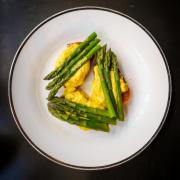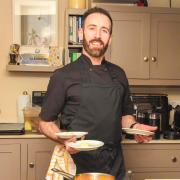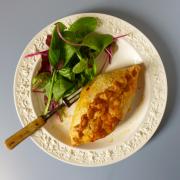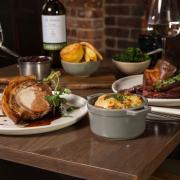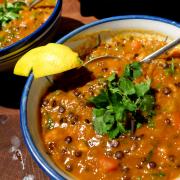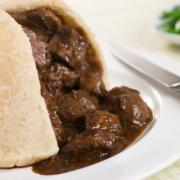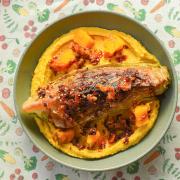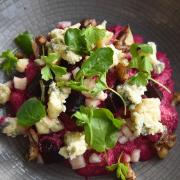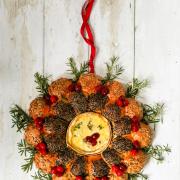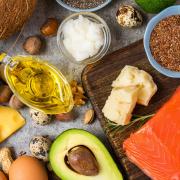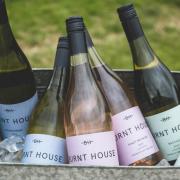There’s nothing more enjoyable on a summer afternoon than the refreshing flavour of elderflowers. Linda Duffin goes foraging

Elders grow like weeds in the wilder parts of our garden, and although they’re scrubby things for most of the year, in early summer they foam with flowers.
Last year I made my own elderflower cordial for the first time, a lovely refresher mixed with sparkling water on a hot day and even better in a champagne cocktail. I used it here to make elderflower pannacottas, the most delicious summery dessert.
I’ve given the cordial recipe below, but don’t beat yourself up if you don’t have time or can’t be bothered – bought cordial works too.

Elderflower cordial
This will keep in the fridge for up to a month. If you want to keep it for longer, either add some citric acid and heat process at 80C for 30 minutes, or pour into plastic bottles (leaving some head room for expansion) and freeze.

Ingredients:
About 30 elderflower heads
Finely grated zest and juice of 3 unwaxed lemons and 1 orange
1.5 litres water
1.5 kg sugar
1 heaped teaspoon citric acid (optional; available from brewing shops)
Method
Debug the elderflowers and place in a large bowl with the orange and lemon zest. Bring the water to a boil and pour over the flowers. Cover and leave overnight to infuse. Strain the liquid through a scalded jelly bag (in extremis, use an old but scrupulously clean tea towel) and pour into a saucepan. Add the sugar and fruit juices. Heat gently to dissolve the sugar and cook for a few minutes, then pour into sterilised bottles and seal.
Elderflower and Buttermilk Pannacotta (serves 4)
The first time I made these my poor husband had to eat them every day for a week as it was tricky getting the set right, but I think I’ve cracked it. The buttermilk reduces the overall fat content while retaining the pannacotta’s creaminess, and gives a pleasant lactic tang that offsets the elderflower fragrance. You can buy it in most supermarkets. n
Ingredients:
250 ml double cream
250 ml buttermilk
40g vanilla caster sugar
75 ml elderflower cordial
2 ½ sheets of gelatine (or vegetarian equivalent)
Method
Break up the sheet of gelatine, place it in a small bowl and soak a few tablespoons of cold water to soften. On the stove, heat the cream with the the sugar until the sugar dissolves and the cream is just about to come to boiling point. Remove the pan from the heat, squeeze the excess water from the gelatine and add it to the cream, stirring until it dissolves. Add the buttermilk and stir well, then add the elderflower cordial and mix thoroughly. Pour into dariole moulds or ramekins and put in the fridge to set, for at least four hours, preferably overnight.
When you’re ready to serve, dip the pannacotta moulds in hot water for just a few seconds to loosen them (or run a palette knife round them) and gently up-end them onto plates.
They look pretty with a few sprigs of elderflower sitting on top, but do pick the heads over thoroughly. For some reason earwigs seem to have an affinity for elderflowers and they don’t make a great addition to your dinner table.
Serve with seasonal berries or a fruit coulis, or compote. I made a coulis of gooseberry, a classic combination with elderflower. Cook up around 300-350g of gooseberries with sugar to taste and a scant tablespoon of water. The gooseberries will release a lot of liquid so you won’t need any water if they’re frozen, in fact you may have to cook some liquid off.
Simmer gently until the fruit has broken down and push through a sieve to give a smooth puree.
Linda Duffin is a Suffolk-based food writer who likes to cook and eat seasonally and locally. She blogs as her alter ego Mrs Portly at http://mrsportlyskitchen.wordpress.com




